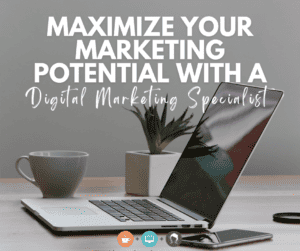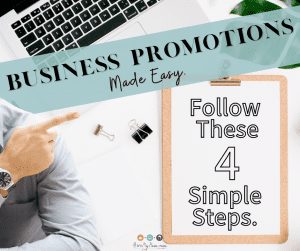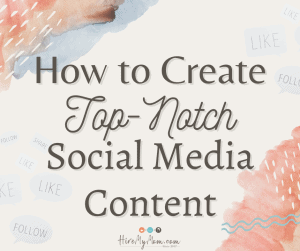Advanced Video Marketing Techniques for Your Business

Thanks to platforms like TikTok or Instagram Reels, videos have taken off online. Images and text can help communicate your company’s offerings, but videos are the way to truly connect with your audience. However, everyone is making videos nowadays, so how do you make yours stand out amongst the crowd?
Optimizing Video Content for SEO and Search Algorithms
To maximize your video’s SEO, start with keyword research using tools like Ahrefs or SEMrush to find high-traffic keywords relevant to your industry. Embed these keywords strategically:
- Title and Description: Your video title should be a click-worthy headline featuring the primary keyword. Write a robust description (250-300 words) with secondary keywords naturally woven in, providing a comprehensive overview of the video content. If your keyword is “remote employees” then you might create a video title such as “6 Tips on Hiring Remote Employees”. Your description should include the keyword “remote employees” as naturally as possible as well as other, secondary key words such as “small businesses hiring”. Algorithms are smart and know if you are just trying to stuff as many keywords as possible into the description so write it like you would for a human, not the algorithm!
- Tags: Add a mix of broad and specific tags. YouTube’s algorithm in particular uses these to categorize content, so include high-traffic keywords and niche-specific terms. For example, a broad hashtag might be #hiring but a more specific hashtag might be #hiringremoteemployees
- Thumbnail Optimization: Design custom thumbnails with compelling visuals and text overlays featuring main keywords. Use tools like Canva or Adobe Spark for A/B testing different thumbnails to find the highest CTR. Thumbnails should be bright and easy to read — remember, you only have a few seconds to catch someone’s eye, and thumbnails are very small previews.
- Closed Captions and Transcripts: Upload SRT files for closed captions and provide full transcripts. These elements are crawled by search engines, boosting your SEO. Use software like Rev or Otter.ai to automate this process.
- Video Sitemap: Generate a video sitemap and submit it to Google Search Console. This helps search engines index your video content more efficiently. Use Yoast SEO or All in One SEO plugins if you’re on WordPress. This is for those that have video libraries on their website, not just their social media pages.
Implementing Advanced Editing Techniques for Enhanced Viewer Experience
The editing process is crucial in shaping your video marketing narrative. Advanced editing techniques can significantly enhance viewer experience:
- Color Grading: Enhance your videos’ visual appeal by adjusting colors, contrast, and saturation using tools like Adobe Premiere Pro or DaVinci Resolve. Remember, people like bright videos with vibrant colors!
- Motion Graphics: Utilize motion graphics to emphasize key points or data. Tools like After Effects can create dynamic animations that captivate viewers and reinforce your message.
- Cutting Techniques: Use jump cuts to condense content, while L-cuts and J-cuts can improve pacing and maintain narrative flow. Don’t be afraid to cut out pauses that aren’t necessary — even if the frame jumps a bit, keep in mind your audience has a short attention span.
- Sound Design: Prioritize audio quality with balanced levels, incorporating royalty-free music, sound effects, and voiceovers to create an immersive experience. Try to use a microphone when filming — there are now great tiny mics that plug right into your phone!
- Call to Action (CTA): Place CTAs strategically using on-screen text prompts or visual cues to guide viewers toward the next steps. This tells your viewers what you want them to do, whether you want them to subscribe to your channel or purchase a product.
Leveraging Social Media Platforms for Maximum Video Reach
To maximize the reach of your video marketing efforts, strategically utilize social media platforms tailored to their unique features and user bases:
- Platform-Specific Formats: Adapt your content to suit the preferred formats of each platform. For example, Instagram Stories and TikTok thrive on vertical videos, whereas YouTube favors landscape orientations. Each platform also has different time requirements; YouTube Shorts can be a maximum of sixty seconds but TikTok videos can be up to ten minutes long.
- Cross-Promotion: Distribute shorter video segments or teasers across different social media channels, redirecting viewers to your main video. Customize these snippets to align with each platform’s style and audience preferences.
- Influencer Partnerships: Engage with industry influencers to expand your reach. Influencers can offer credibility and attract their followers to your content, boosting engagement and visibility.
- Paid Advertising: Leverage the sophisticated targeting options available on platforms like Facebook, Instagram, and YouTube. By using demographic, interest, and behavioral targeting, you can ensure your videos reach the most relevant audiences.
- Live Streaming: Integrate live video into your strategy. Live streams encourage real-time interaction, creating a sense of immediacy and fostering deeper engagement.
- User-Generated Content (UGC): Encourage your audience to create and share their own videos related to your brand. UGC can enhance authenticity and organically expand your reach as followers share their experiences with their networks.
Utilizing Data Analytics to Measure Video Performance and Engagement
Data analytics is crucial for refining your video marketing strategies. Start by utilizing Google Analytics, YouTube Analytics, and social media insights to gather detailed performance data. Focus on advanced metrics such as View-Through Rate (VTR), which indicates the percentage of viewers watching your video in its entirety. Analyze Audience Retention to pinpoint where viewers drop off and adjust your content structure accordingly. Monitor Click-Through Rate (CTR) to assess the effectiveness of your thumbnails and calls to action, experimenting with different styles and placements to boost engagement. Dive into demographic data, examining age, gender, and location to tailor future content more precisely. Evaluate traffic sources to identify which platforms drive the most views. For videos hosted on your website, use heat maps to visualize viewer interactions, highlighting the most engaging segments. This granular approach will help you make data-driven decisions to optimize your video marketing efforts.
What is one thing you wish more people did in their video marketing? Share it with us so we can let our audience know!





